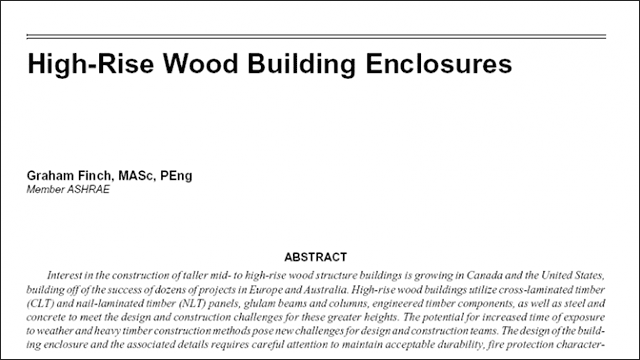Interest in the construction of taller mid- to high-rise wood structure buildings is growing in Canada and the United States, building off of the success of dozens of projects in Europe and Australia. High-rise wood buildings utilize cross-laminated timber (CLT) and nail-laminated timber (NLT) panels, glulam beams and columns, engineered timber components, as well as steel and concrete to meet the design and construction challenges for these greater heights. The potential for increased time of exposure to weather and heavy timber construction methods pose new challenges for design and construction teams. The design of the building enclosure and the associated details requires careful attention to maintain acceptable durability, fire protection characteristics, and thermal efficiency. Prefabrication of whole floor, wall, or other modular components is utilized to speed up the time of construction and protect the wood assemblies from exposure to moisture. This paper shares lessons learned through experience in the field and provides guidance on building enclosure design and detailing for mid- to high-rise wood buildings with a focus on control of heat, air, and moisture. Structural, fire, and acoustic considerations are not the focus of the paper nor covered here in detail. Case studies from the building enclosure designs of selected leading new, tall wood buildings are presented, including the Bullitt Center in Seattle, Washington, USA (6 storeys, ~76 ft), the Wood Innovation Design Centre (6 tall storeys, ~97 ft) in Prince George, British Columbia, Canada, and the Brock Commons UBC Student Residence building (18 storeys, ~190 ft) in Vancouver, British Columbia, Canada.
Note: This article was published in Proceedings of Buildings XIII, 2016. Copyright 2016 ASHRAE. Reprinted by permission at rdh.com. This article may not be copied and/or distributed electronically or in paper form without permission of ASHRAE. For more information about the Buildings XIII Conference Proceedings, visit http://web.ornl.gov/sci/buildings/2016/proceedings/.
